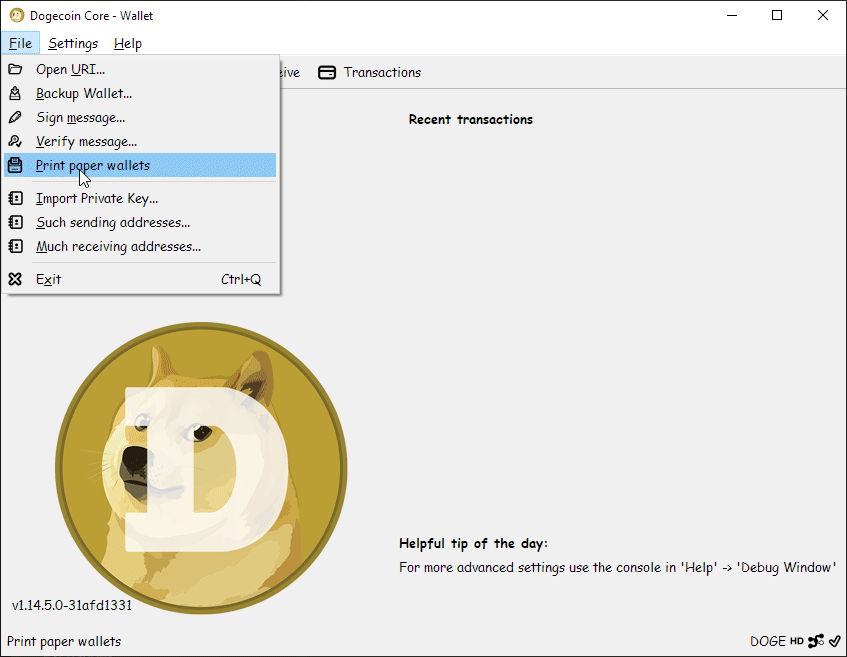on
Paper wallet fundamentals
A wallet is a container for pairs of strings. You can have 2, 4, 6… 2n strings in a valid wallet. The two strings of each pair are a public hash string and a private hash string. Why both and not just private hash strings? Without the public, the software it’ll eventually work with won’t know which address to unlock coins for (“key” is a bad metaphor; the public key is more like a lockbox, and the private key is more like a key). Without the private key, you can’t tell the blockchain that it’s okay to delink coins from your address and link them to a new address. Software like Dogecoin Core (and Bitcoin Core) and Multidoge store these pairs in .dat files (.dat wallets). These are just containers–“wallets”–for the pairs of sha strings. Though you can’t see the strings in .dat files with a text editor, the strings are there (Create a new receiving address, go to Help > Debug > Console, and then dumpprivkey <public key>). With paper wallets, you store the the public hash string and private hash string(s) together on a piece of paper instead of storing in a standard .dat file.
P.S. Dogecoin Core automates paper wallet printing.
